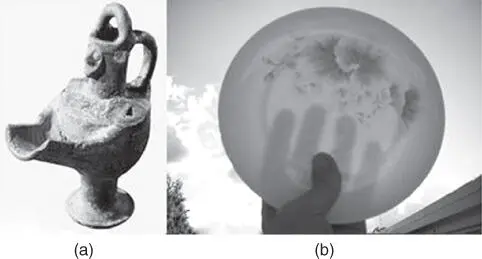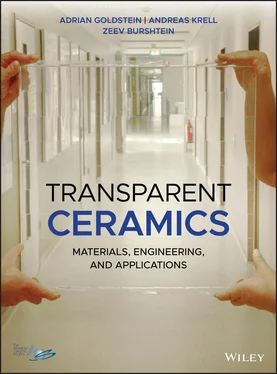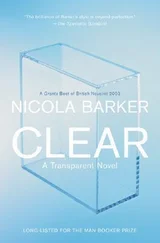For much of their history, said ceramic samples were opaque. Some 5000 years ago, glass making started across the Middle East (Egypt through Mesopotamia) [M2]. Glass objects manufactured in the early days of the Roman Empire achieved a very high level of transparency [M2]. Especially tableware were either ceramic or transparent glass made. People then started to explore materials that would combine some superior functional properties of the opaque ceramics with the esthetically enticing transparency and gloss of glass. Particularly since ceramics and standard glasses contain combinations of similar oxides, silica SiO 2, sodium oxide Na 2O, potassium oxide K 2O, and alumina Al 2O 3. Obviously, the manufacturing processes are fundamentally different.
A glass is formed by fast cooling of melts; it is a mono-phased solid, based on a disordered lattice, which is isotropic at the optical wavelength scale. It can be produced as large blocks devoid of any internal interfaces on the microlevel. When well processed, “large” (over several millimeters sized) pieces lack any regions that might produce light scattering; non-optimally processed glasses may still contain air bubbles causing light scattering. The absorption bandgap of usual silicate glasses is in the UV, and absorption by transition element cations is very low. Consequently, conditions are well met for allowing VIS light transmission. A silicate-based glass window can be highly transparent.
In contrast to glass, earthen ware like a pot, the earliest ceramic form, are polycrystalline, including phases like quartz and aluminosilicates. Most crystallites making up these bodies are optically anisotropic, exhibiting different refractive indices at different light propagation orientations and/or polarizations, and they are randomly oriented. Moreover, large amounts of variable size pores are present. Such samples are thus opaque to VIS light (see Section 2.1).
When sufficiently thin, the first ceramic showing faint translucency was the porcelain (English name adopted from the French, itself converted from the Italian “porcellana,” a translucent marine shell variety). Invented in China, it is often called chinaware. It was perfected in the Jingdezhen region of southeast China, sometime under the Tang dynasty (seventh till tenth century). This ceramic, while also including anisotropic quartz SiO 2or mullite 2Al 2O 3⋅ SiO 2crystallites, had almost all its intercrystallite regions filled with a feldspathic glass. It exhibited only less than ∼0.5% open porosity, and the refractive indices difference among the various phases was relatively low. Owing to the large amount of glass (>60%), thin samples of this material achieved some translucency. In fact, this ceramic comprises a dispersion of crystalline grains in a glassy matrix. The so-called soft porcelains, containing more glass, are more transparent. Still their translucency level can be characterized as moderate. A more significant level of optical transmission was achieved with the advent of bone-china. This kind of soft porcelain was developed in England at the end of the eighteenth century. It consists of anorthite feldspar CaAl 2Si 2O 8, β-tricalcium phosphate Ca 3(PO 4) 2, and a few quartz SiO 2crystals, all dispersed in a large volume of a heterogeneous silicate glass including calcium oxide CaO and alumina Al 2O 3, with minimal amounts of phosphorus oxide P 2O 5. The high mechanical strength of this porcelain allows fabrication of very thin section wares. Figure 1.3provides photographs of an opaque ceramic and a bone-china dish.

Figure 1.3 Evolution of transparency during ceramic history (a) clay pitcher (around 1000 current era), opaque.
Source: Reproduced with permission from Hecht Museum, Haifa University, Israel.
(b) Bone China saucer, translucent.
The glass-ceramic class of materials was discovered during the forties of the twentieth century [S47–S49]. As finished products, these materials were initially entirely crystalline, or comprising a small volume fraction of glass and various crystalline phases. While having many useful mechanical properties, these glass-ceramics were opaque. The glass-ceramics are derived from a “mother glass” by controlledpartial or close to full crystallization. They typically contain at least 20 vol%, up to over 98 vol% polycrystalline phase(s). Further work [B21–B23, P10, P30] in the 1950s and early 1960s resulted in the development of transparent glass-ceramics. In these materials, transparency appears either because the crystallites, which may be even micrometers sized, exhibit only slight anisotropy. For example, stuffed beta-quartz β-SiO 2-like solid solutions (including lithium Li +, aluminum Al 3+, magnesium Mg 2+, and/or other positive ions) have a refractive index matched to that of the substantial fraction of residual glass phase or are based on nanosized crystals (grain-sized GS < 50 nm) that produce relatively little light scattering. Most of the early transparent glass-ceramics included at least 20–30 vol% glass, which was as important as the transmissive ability of the crystalline phases to their transparency. Recently, controlled crystallization also became a method for “fully” crystalline transparent sample production [R30] (glass content being less than 0.5 vol%; see Section 3.1.4).
In the late 1950s, the first real transparent ceramic objects, exhibiting a fair level of light transmission, comprising only polycrystalline phases, was developed [B66]. A brief presentation of that development is the subject of the next section.
1.5.2 The First Fully Crystalline Transparent Ceramic
General Electric's research department has developed a fully dense polycrystalline alpha-alumina α-Al 2O 3product named Lucalox(acronym for trans lucent aluminum oxide), exhibiting a high (mostly diffusive) TFT, together with a significant in-line transmittance, for less than approximately 1.5 mm thickness. This development demonstrates a good example of synergy between ceramic and engineering sciences [B66, C2, C39]. The latter contributed a highly pure, only slightly agglomerated submicron raw material. As opposed to most alumina powders of that time, it was based on quite isometric particles. It has also been observed that very small additions of magnesium oxide MgO could promote sintering densification and eliminate or reduce the fraction of excessively large grains in the sintered product. Regarding ceramic science, the Lucalox development occurred in a period when modern understanding of sintering made a huge leap forward. Some of the luminaries of sintering theory, first and foremost R. L. Coble, were directly involved in the Lucalox saga. Combining experimental observations (some made by chance) with suggested sintering models, the developers concluded that (i) intra-grain occlusion massively stabilized pores; (ii) occlusion is favored by grain growth, especially its “abnormal” variety; (iii) abnormal grain growth may be reduced by suitable dopants (that control, probably selectively, grain boundary mobility); and (iv) magnesium oxide MgO was the most efficient such additive. Work started around 1956 and by 1959 led to the eventual achievement of a pore-free, highly translucent alumina, such as that shown in Figure 1.4.
Compared to fused silica, the Lucalox product at that time combined a very reasonable transmittance with excellent refractoriness, reasonable resistance to thermal shock, and enhanced resistance to chemical attack by high pressured sodium Na vapor at ∼1200 °C. The Lucalox allowed the design of streetlamps, based on the fluorescence of high pressure sodium oxide NaO vapor. The high pressure and temperature – allowed by alumina but not the silica containers – conferred to the lamps exceptional luminosity, up to about 100 Lm/W. This device ( Figure 1.5), the first to include transparent ceramic as a key component, was marketed in 1966 and achieved great commercial success. By 1990, some US$500 million worth of such lamps were sold.
Читать дальше












